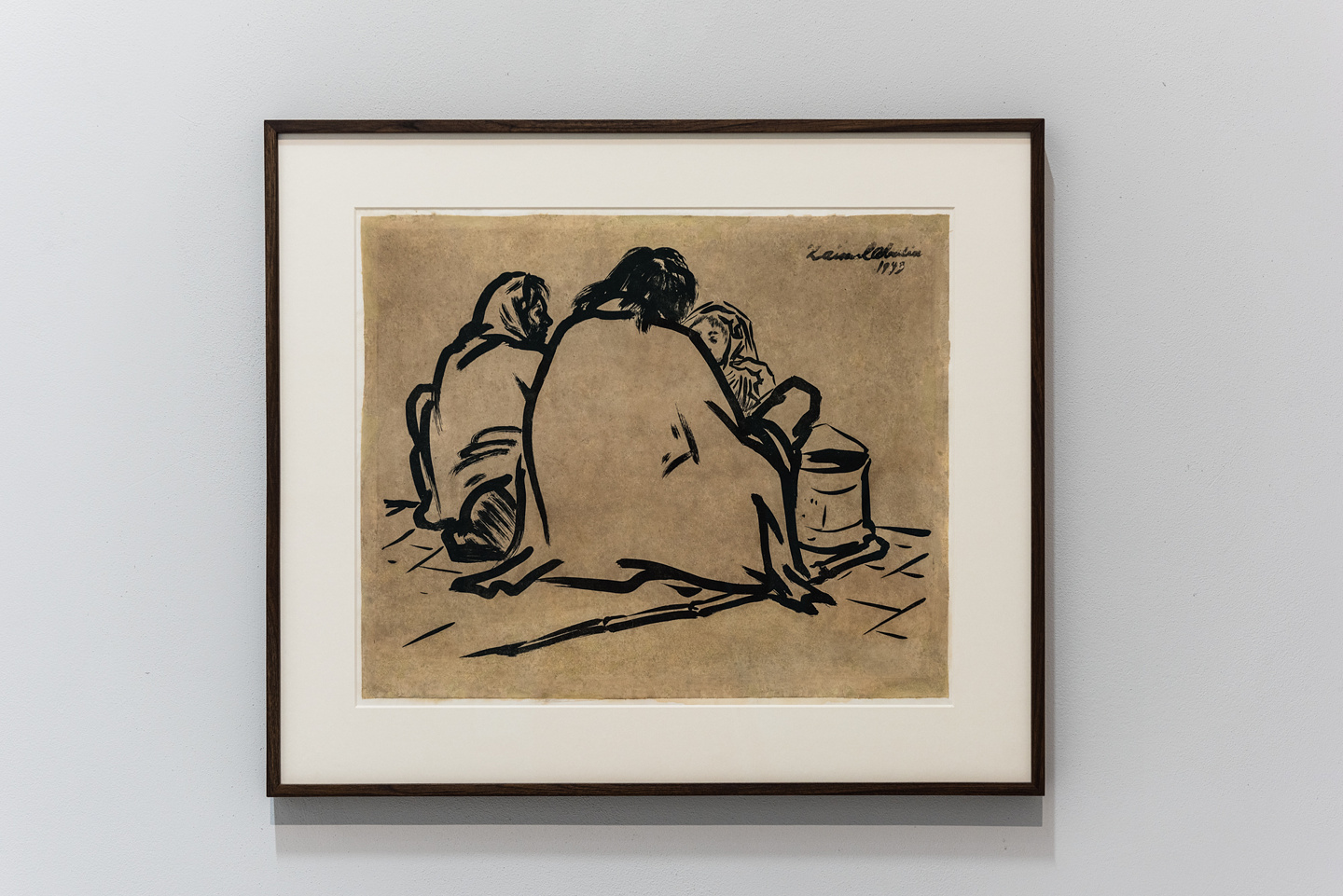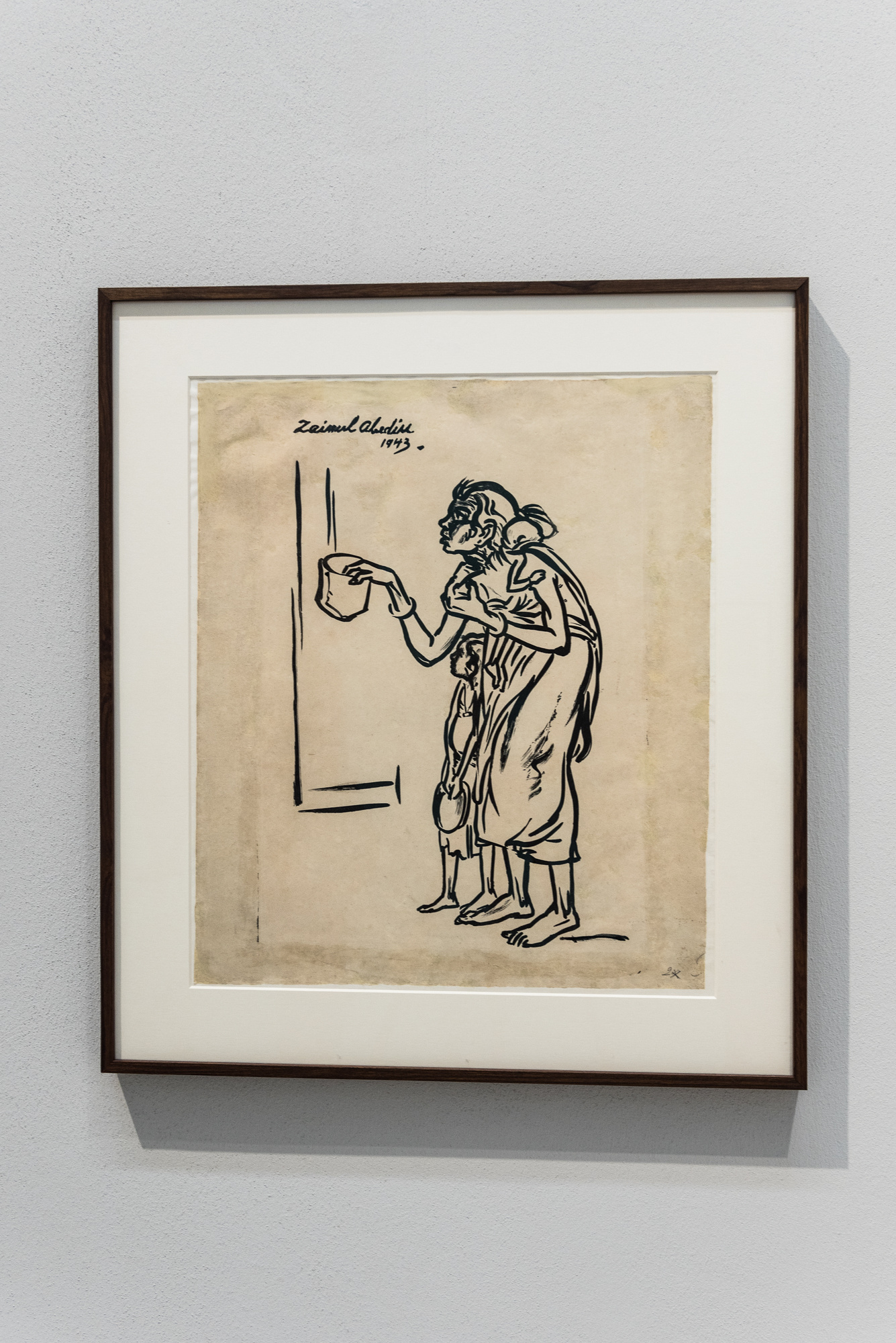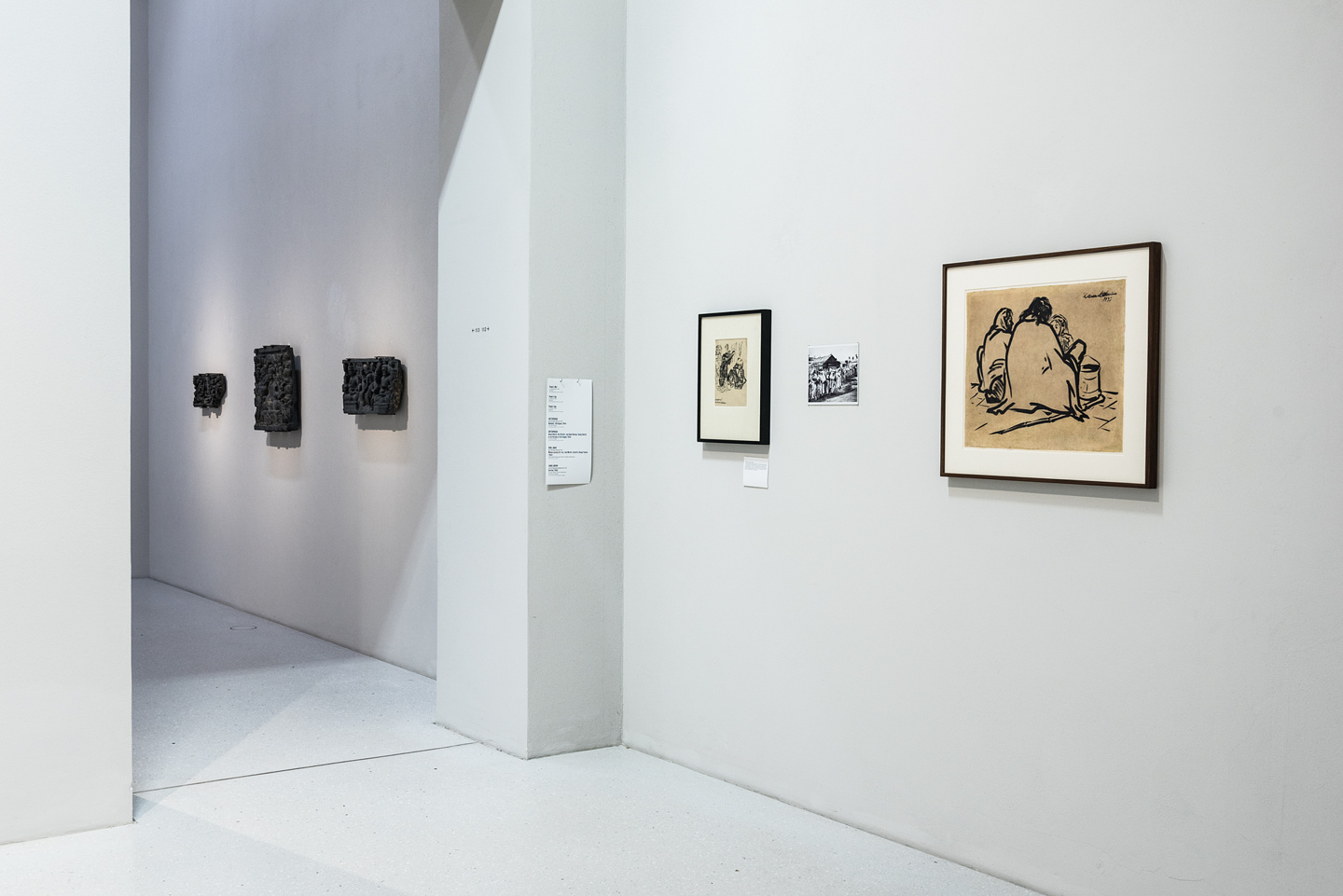
Zainul Abedin, Untitled (1943), from the series “Famine Sketches,” Chinese ink on paper, 42.5 × 52.2 cm, installation view, Neue Galerie, Kassel, documenta 14, photo: Milan Soremski
The Bengali painter Zainul Abedin, who began his career as an art teacher in undivided India, was jolted out of his privileged existence by the Bengal Famine of 1943–44. At the birth of Pakistan in 1947, the thirty-three-year-old was one of the nation’s few professional artists. When Bangladesh gained independence in 1971, he had almost thirty years’ experience in the modernizing practice and education of art.
Witnessing the starving victims of the Bengal Famine prompted a radical shift in the artist’s practice. Precise, anatomically correct scenes were replaced by quick strokes and gestural expressions to better represent the distress of famished, semi-naked bodies. These bodies were configured on stark, flat surfaces with just a few strokes suggesting urban settings, the composition lent dynamism by an extended limb or a moving body. The emotional intensity and striking visual idiom of Abedin’s response to the Bengal Famine established him among the most important painters of his generation. Increasingly conscious of his heritage, he turned to the folk arts and crafts of rural Bengal in the 1950s and ’60s, combining a conservationist agenda—preserving ethnic identities expressed through culture—with the visual language of modernism.

Zainul Abedin, Untitled (1943), from the series “Famine Sketches,” Chinese ink on paper, 50,5 × 36,5 cm, installation view, Neue Galerie, Kassel, documenta 14, photo: Milan Soremski
Yet Abedin’s strengths were emotive rather than conceptual, as was proven in 1970, a few months before the Bangladesh War of Independence began. When a tornado devastated coastal villages, the Pakistani state’s apathy reminded Zainul of the colonial state’s actions in 1943. A visit to an affected area resulted in the Manpura series of painted sketches, in which minimally drawn (but nonetheless fully formed) figures are rendered in gestural lines moving across barren spaces. We see, again, how a traditional society’s transition to modernity is realized in the real world and the world of images.
As Abedin developed as an artist, his country was constantly being redefined on religious, linguistic, and ethnic lines. He lived his life as a citizen of the British Empire, of India, of Pakistan, and finally of Bangladesh. Yet his art was defined not by ideology or identity, but inspired by the new modernity of mind.
—Prabranjan Ray

Zainul Abedin, from the series “Famine Sketches,” installation view, Neue Galerie, Kassel, documenta 14, photo: Milan Soremski
